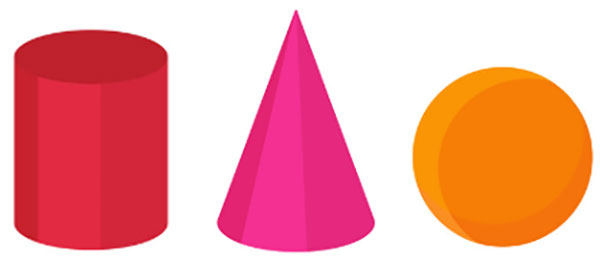
- CBSE Class 6 Maths Notes
- CBSE Class 6 Maths Notes
- Chapter 1 - Knowing Our numbers
- Chapter 2 - Whole numbers
- Chapter 3 - Playing with numbers
- Chapter 4 - Basic Geometrical Ideas
- Chapter 5 - Understanding Elementary Shapes
- Chapter 6 - Integers
- Chapter 7 - Fractions
- Chapter 8 - Decimals
- Chapter 9 - Data Handling
- Chapter 10 - Mensuration
- Chapter 11 - Algebra
- Chapter 12 - Ratio and Proportion
- Chapter 13 - Symmetry
- Chapter 14 - Practical Geometry
Chapter 5 - Understanding Elementary Shapes
Introduction
Line, angle, triangle, quadrilateral, polygon, and circle are examples of elementary shapes. Any complex geometrical shape can be made from these elementary shapes.

For example, a square pyramid is made up of four isosceles triangles and a square base.
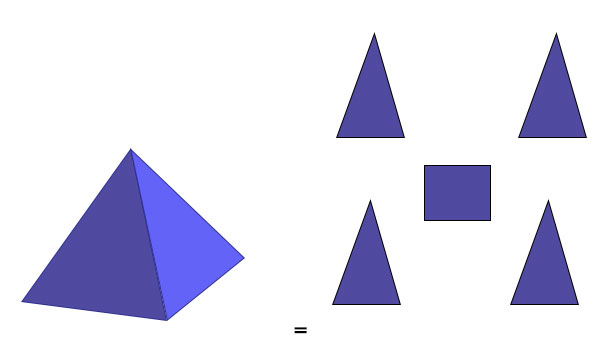
A hexagonal prism is made of 6 rectangles and two hexagons.

Even elementary shapes come in different forms, like a triangle can be an equilateral triangle, an isosceles triangle, or a scalene triangle. Similarly, a quadrilateral can be a rectangle, a square, or a parallelogram.
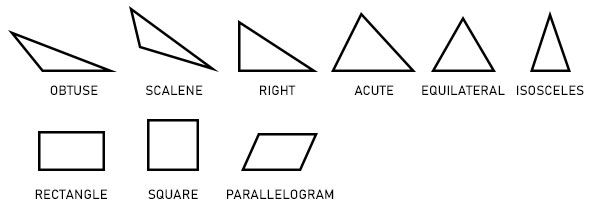
Measuring Line Segments
The length of a line segment is measured in millimetres and centimetres.
Comparison by Observation
If we place two line segments side by side, then their lengths can be easily compared just by observing them.
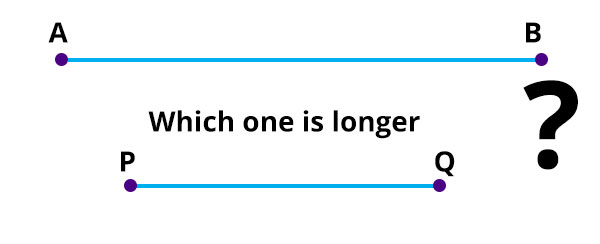
Comparing using the Divider
When two line segments are nearly of the same length, we have to use a divider to compare their lengths.
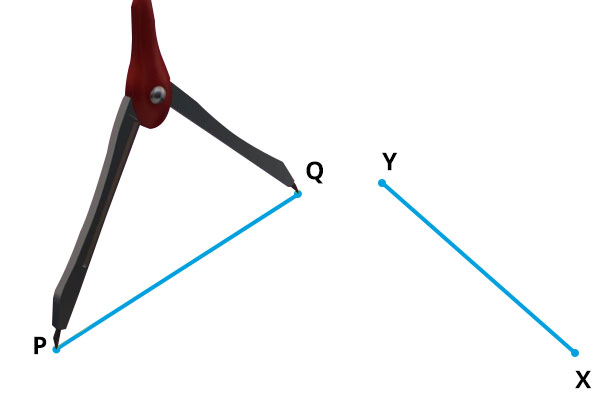
Measuring using a Ruler
The ruler is marked in centimetres and millimetres. The difference between two big markings on a ruler is 1 cm, while the difference between two small markings on the ruler is 1 mm.
Measure the line segment by keeping the ruler along the line segment with the zero of the ruler placed at one endpoint of the line segment. The reading of the other endpoint on the ruler gives the length of the line segment.

Measuring using a Ruler and a Divider
First, take the divider and with its arms stretched, fix it across the endpoints of the line segment.
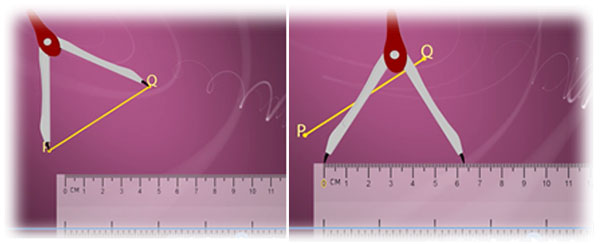
Then, lift the divider and put on the ruler so that one of the arms of the divider coincides with the zero of the ruler. Take the reading from the other arm of the divider.
Types of Angles
Parallel Lines
Parallel lines never meet at a point.
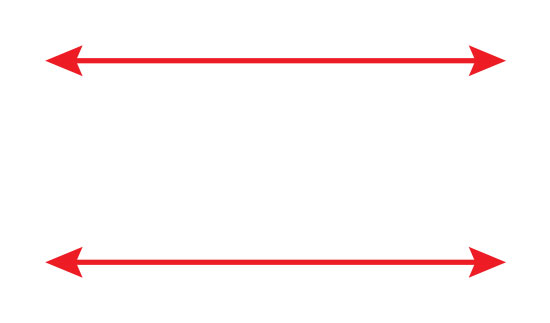
Intersecting Lines
When two lines meet at a point, they are called intersecting lines; the meeting point is called the point of intersection.
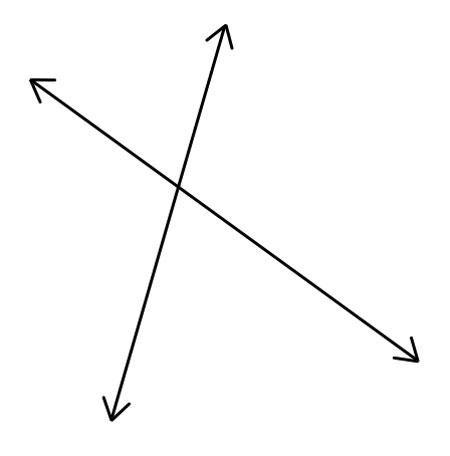
Two intersecting lines make four angles; usually two acute and two obtuse angles.
Perpendicular Lines
Two lines making a "+" sign are called perpendicular lines. The angles formed by perpendicular lines are called right angles.
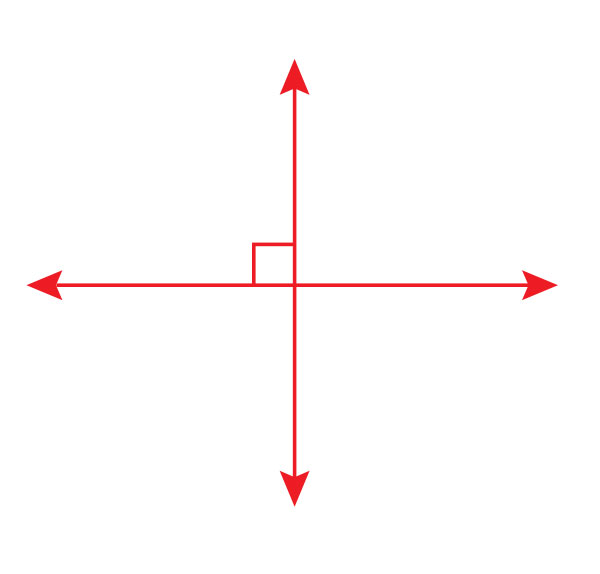
Angle
When two line segments meet at a point, they form an angle. The line segments are called the arms of the angle. ABC is an angle.

Right Angle
An 'L' shaped angle is called a right angle and the arms of the angle make right angle or 90° with each other.
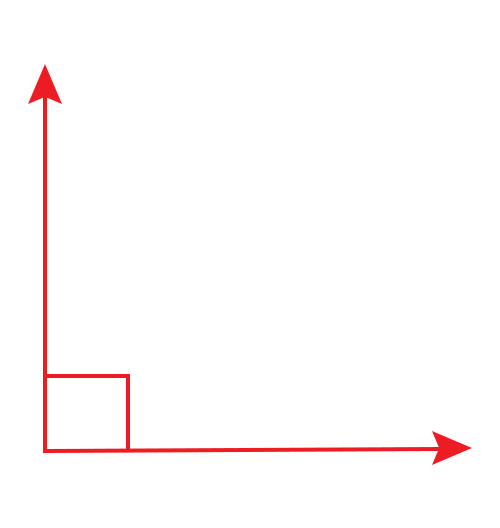
Acute Angle
Angles smaller than right angles (90 degrees) are called acute angles.
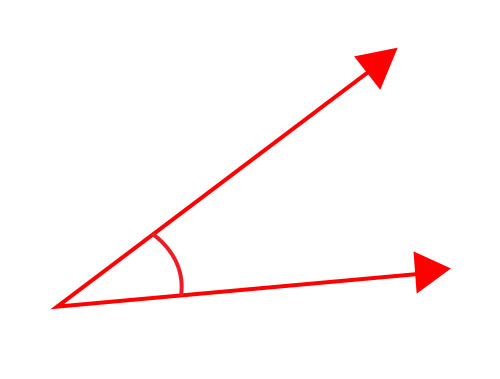
Obtuse Angle
Angles greater than right angles (90 degrees) but smaller than a straight angle are called obtuse angles.
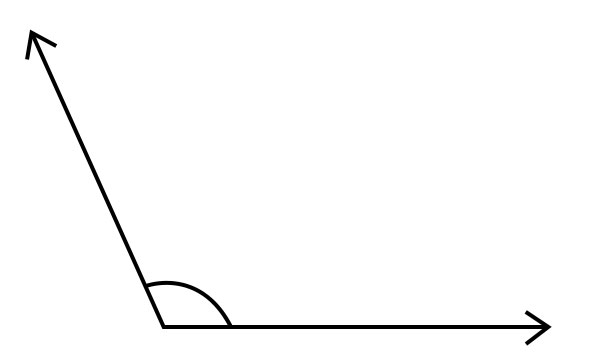
Straight Angle
A straight angle is formed when the rays forming the angle point in exactly opposite directions. A straight angle is equal to 180°.

Reflex Angle
An angle that lies between 180° and 360° is called a reflex angle.
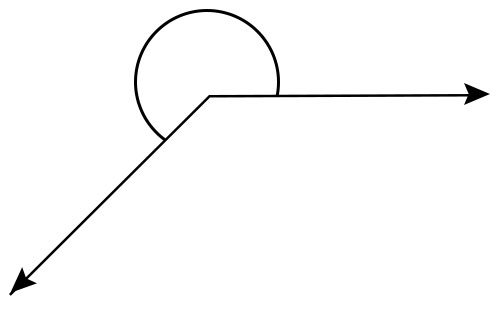
Complete Angle
A complete angle is formed when one complete turn or rotation is made by an arm of the angle with respect to the base arm. A complete angle is equal to 360 °.

Measuring Angles
Angles are measured with the help of an instrument known as protractor which is found in a compass box.
Just like a ruler, a protractor too has markings but in the shape of a half circle. The unit of angle is a degree. The markings start from 0° and end on 180°.
Measuring an Acute Angle
Place the protractor such that its center coincides with the vertex of the angle.
Ensure that the 0° line or base line of the protractor coincides with the base arm of the acute angle.
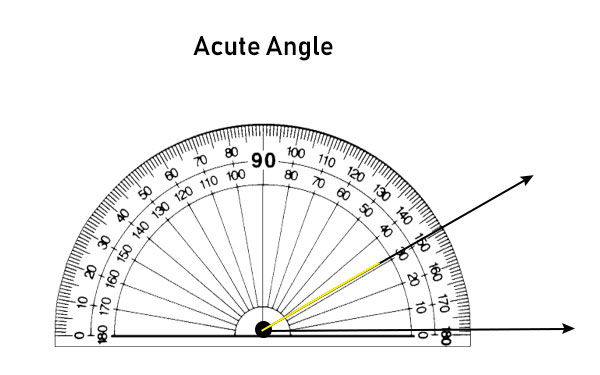
The measurement is recorded from the position of the second arm of the angle on the protractor.
Measuring a Right Angle
When the second arm of the angle points to 90° on the protractor, it is a called a right angle.
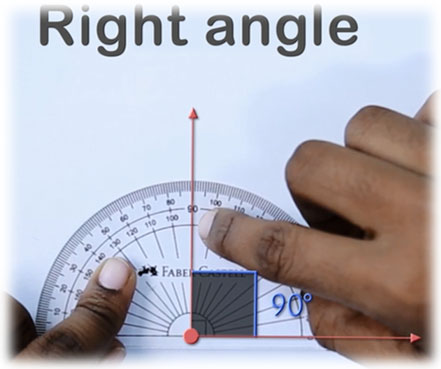
Measuring an Obtuse Angle
When the second line of the angle points anywhere between 90° to 180° on the protractor, it is an obtuse angle.
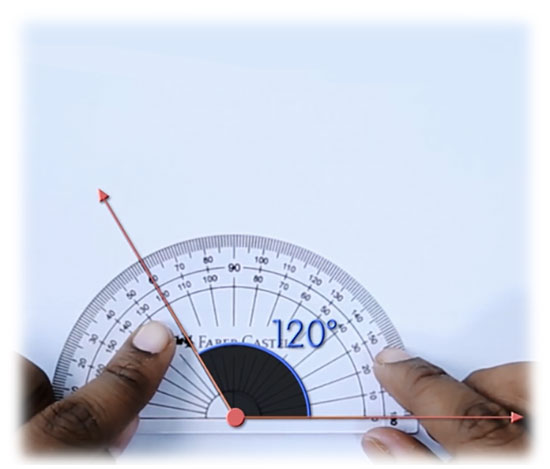
Measuring a Reflex Angle
A reflex angle measures between 180° and 360°. We cannot directly measure a reflex angle using a protractor, as the maximum it can measure is 180°. So the reflex angle is measured indirectly.
The pair of arms of an acute/obtuse angle also form a reflex angle on opposite side. In that case, the measure of the acute/obtuse angle = 360° − measure of reflex angle.

Measuring Straight and Complete Angle
A straight angle measures 180°. Using a protractor, the straight angle can be measured to show the reading of 180°. A complete angle has the measure of 360° or twice the measure of a straight angle.
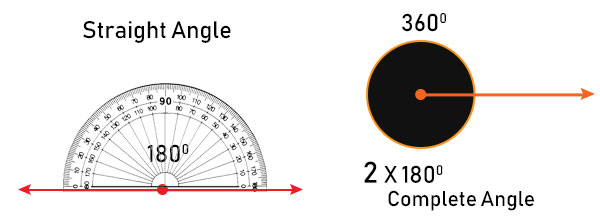
Perpendicular Bisectors
A bisector is a line that divides another line segment into two equal parts. A line is said to be perpendicular to another line if it makes an angle of 90° with it. The lines are then said to be perpendicular lines.
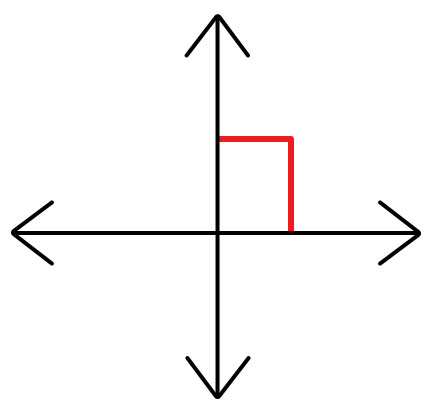
A perpendicular bisector of a line segment must be perpendicular to it and also divide it into two equal parts.
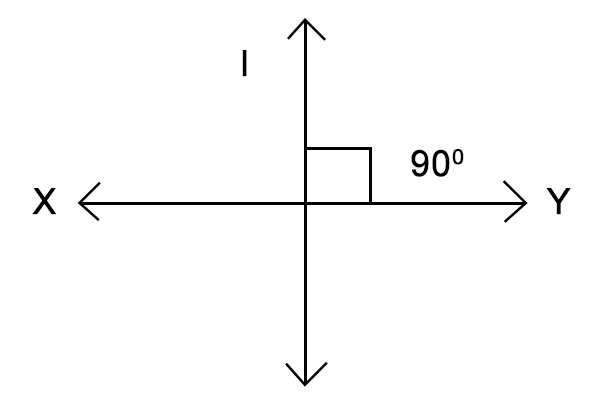
In the following example, the bisector is not perpendicular to XY, so it is not a perpendicular bisector.
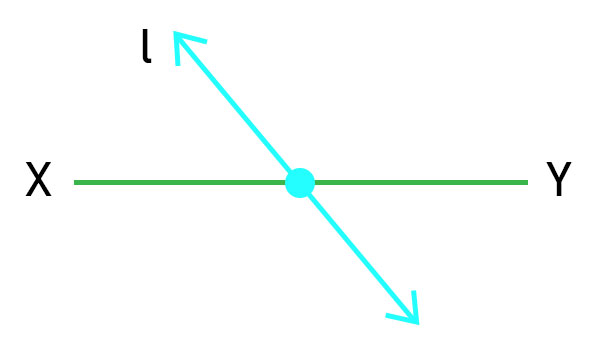
Types of Triangles
A triangle is an elementary shape and it is a polygon with the least number of sides. A triangle has three sides and three angles.
We can classify triangles based on their sides and angle properties.
Acute Triangle
If all the angles in a triangle measure less than 90°, then the triangle is an acute-angled triangle or acute triangle.
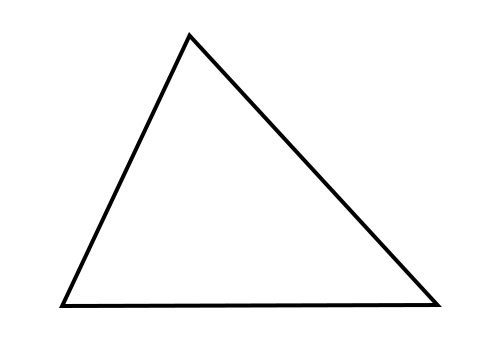
Right-Angled Triangle
If two angles in a triangle are acute and third angle is a right angle or 90°, such a triangle is called a right-angled triangle.
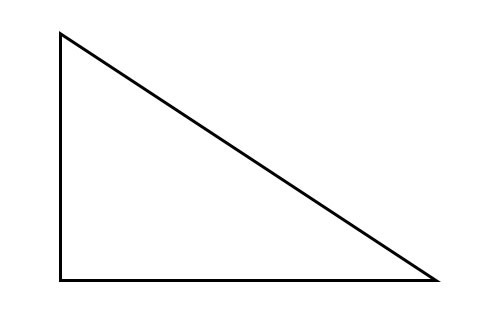
Obtuse Triangle
If two of the angles in a triangle are acute and the third angle is an obtuse angle or an angle greater than 90°, such a triangle is called an obtuse-angled triangle or obtuse triangle.
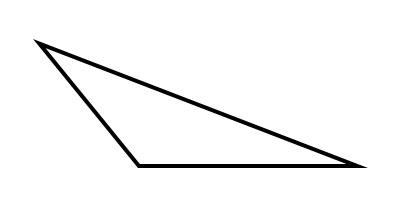
Equilateral Triangle
In a triangle, if the lengths of its three sides are equal, then such a triangle is called an equilateral triangle. In an equilateral triangle, all the angles are equal to 60°.
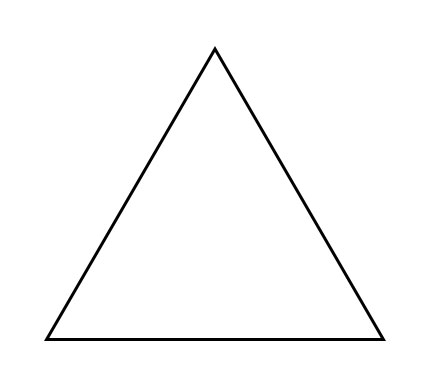
Isosceles Triangle
In a triangle, if two of the sides are found to be equal in length, then such a triangle is called an isosceles triangle. In an isosceles triangle, the angles opposite to the equal sides are also equal.
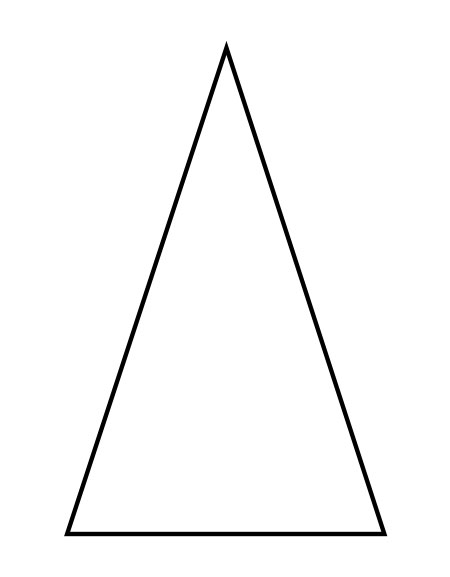
Scalene Triangle
In a triangle, if the lengths of the sides are different or unequal, then such a triangle is called a scalene triangle. All its three angles are unequal too.
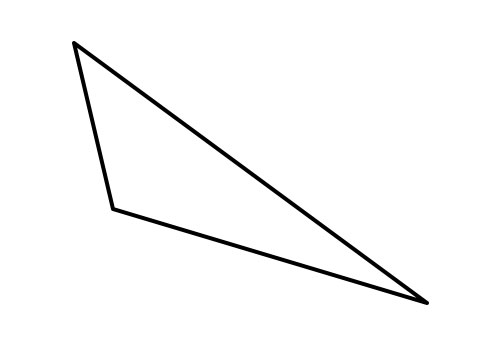
Types of Quadrilaterals
A quadrilateral is a polygon with four sides and four angles. There are many types of quadrilaterals like rectangle, square, parallelogram, rhombus, and trapezium.
Rectangle
Rectangle is a type of quadrilateral. It has two pairs of sides that are of equal length and are parallel to each other. All the angles are equal to 90°.

The diagonals of a rectangle are equal in length and bisect each other.
Square
All the sides of a square are equal and parallel to each other. All its angles are equal to 90°.

A square is a special case of a rectangle where the length and breadth are equal. The diagonals are perpendicular bisectors of each other.
Parallelogram
It is a type of quadrilateral where opposite sides are equal and parallel to each other. Opposite angles are equal and adjacent angles are different.
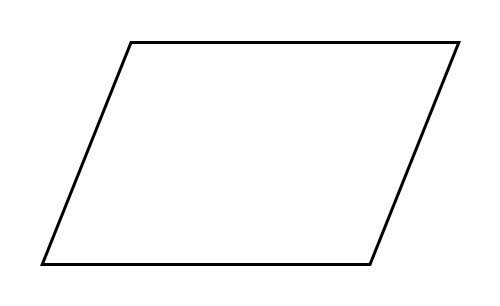
All rectangles and squares are parallelograms. But all parallelograms are not rectangles or squares.
Rhombus
A special type of quadrilateral, the rhombus has all its sides equal.
- Opposite sides are equal and parallel to each other.
- Opposite angles are equal but adjacent angles are not equal.
- The diagonals are not equal but are perpendicular bisectors of each other.
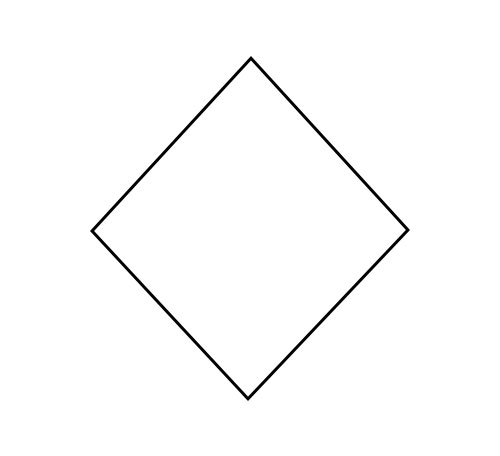
- All rhombuses are parallelograms, but all parallelograms are NOT rhombuses.
- All squares are rhombuses, but all rhombuses are NOT squares.
Trapezium
A trapezium is a quadrilateral where there is a pair of parallel opposite sides.
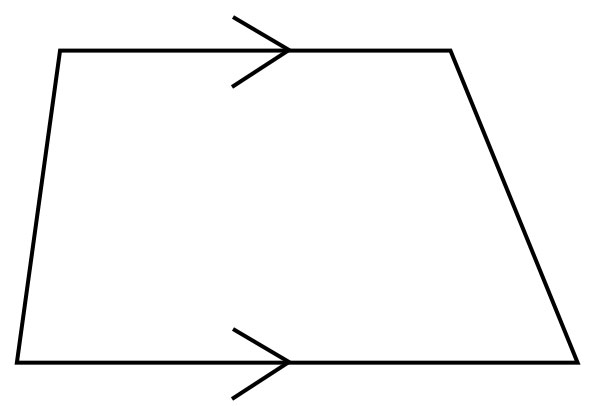
Quadrilateral
Any four-sided figure is called a quadrilateral. Rectangles, squares, trapeziums, parallelograms and rhombuses are all special types of quadrilaterals. A four-sided figure in which no sides or angles are equal is a generic quadrilateral.
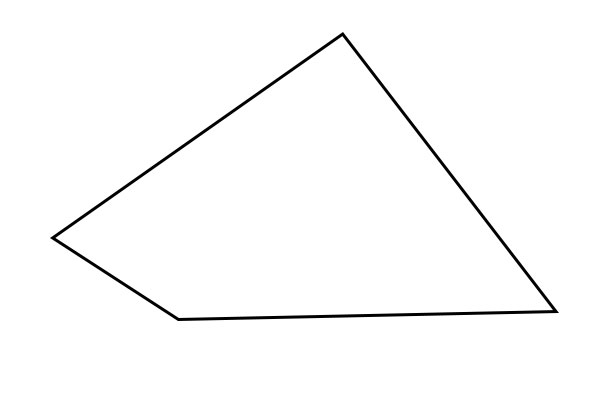
Diagonals of Quadrilaterals
- Diagonals of a rectangle and a square are equal.
- Diagonals of a parallelogram and a rhombus are not equal.
- Diagonals of a square and a rhombus are perpendicular to each other.
- Diagonals bisect each other in a rectangle, square, parallelogram, and a rhombus.
Types of Polygons
A polygon is a closed figure made of only line segments. Polygons are assigned names depending upon the number of sides they have.
- Triangle is the polygon with the least possible number of sides, that is, three.
- Quadrilaterals are polygons with four sides.
- A five-sided polygon is a pentagon.
- A six-sided polygon is a hexagon.
- An eight-sided polygon is an octagon.
Regular Polygons
Polygons with equal sides and equal angles are called regular polygons.
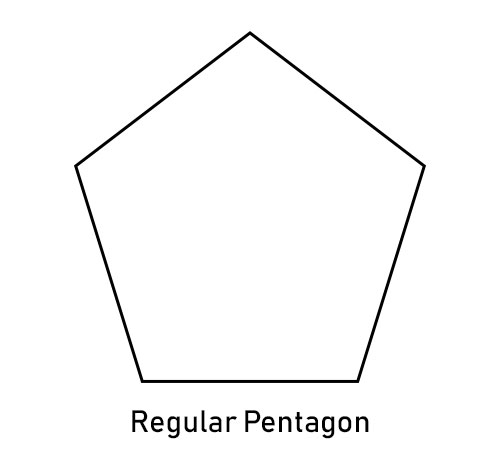
Irregular Polygons
Polygons with unequal sides and angles are called irregular polygons.
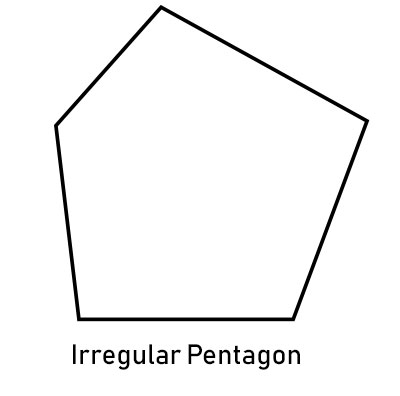
A polygon with increasing number of sides looks increasingly circular. So a circle is a polygon with a very large number of sides or infinite sides.
Diagonals of a Polygon
A diagonal is a line that joins any two non-adjacent vertices in a polygon.
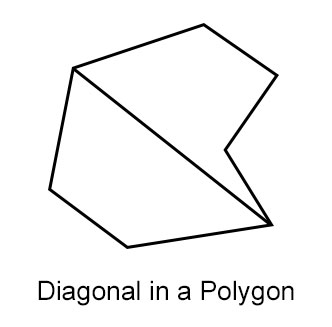
The number of diagonals in a polygon of N sides is given by ${N (N − 3)}/{2}$
Number of diagonals in a pentagon = ${5(5 − 3)}/{2}$ = 5
Number of diagonals in a hexagon = ${6(6 − 3)}/{2}$ = 9
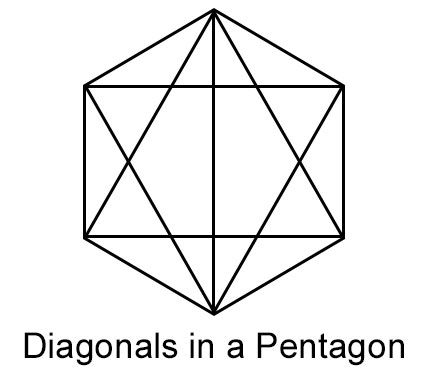
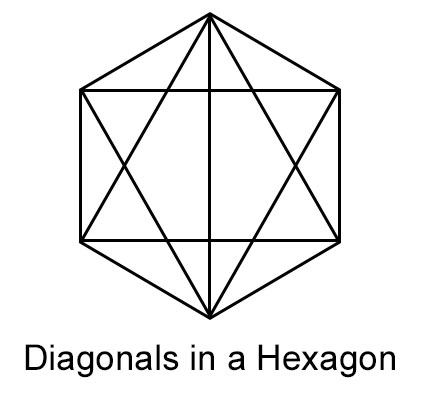
Three-Dimensional Shapes
Dimensions
- A point is a tiny dot with a fixed location. It has no dimensions.
- A line is a collection of points in one dimension, the length.
- A flat plane is a collection of lines. It has two dimensions, the length and the breadth.
- A box is a collection of lines with three dimensions, length, breadth, and the height.
Some basic 2D elementary shapes:

We can build 3D shapes using these elementary 2D shapes.
Cuboid
The 3D box or cuboid is a collection of many rectangles put together.
- It has 6 faces or flat surfaces.
- The faces meet in lines called edges. A cuboid has 12 edges.
- Three or more edges meet at a point called the vertex. A cuboid has 8 vertices.
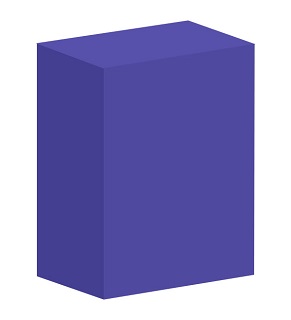
Cube
A cube is a collection of many squares put together. It too has 6 faces, 12 edges, and 8 vertices like a cuboid.
- In a cube, all the edges are equal. In a cuboid, the edges are not equal in length.
- All cubes are cuboids, but all cuboids are NOT cubes.

Triangular Prism
A triangular prism is a 3D shape with 5 faces, i.e., two triangular bases and 3 rectangular lateral faces. It has 9 edges and 6 vertices.
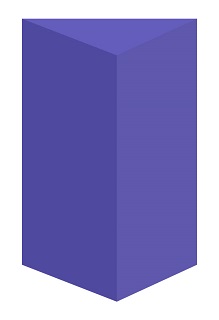
Prisms can be formed from rectangular bases, square bases, pentagonal bases, and hexagonal bases.
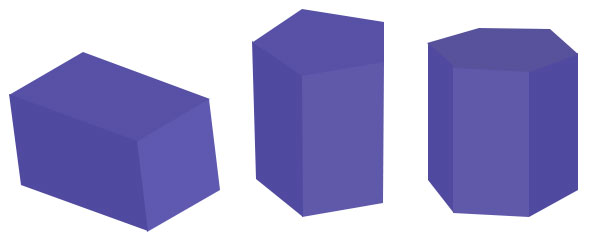
A rectangular prism is a cuboid only and square prism is a cube only.
Square Pyramid
It is 3D shape made out of square and triangular shapes. It has a square base and 4 triangular faces. It has 5 faces, 8 edges, and 5 vertices.
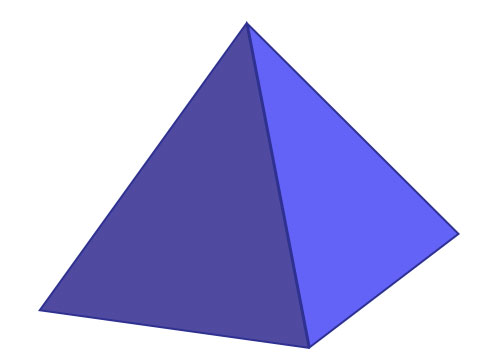
Triangular Pyramid or Tetrahedron
It is a 3D shape that is made from four triangular shapes. It has 4 triangular faces, 6 edges, and 4 vertices.
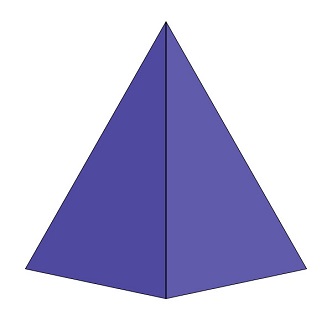
Cylinder, Cone, and Sphere
Cylinders, cones, and spheres are the 3D shapes that do not have straight edges.
- A cylinder is made from two circles and a rectangle. It has two circular bases.
- A cone is made of a circular base and a sector
- A sphere has no base, face, edge, and vertex. A sphere is a 3D version of a 2D circle.
